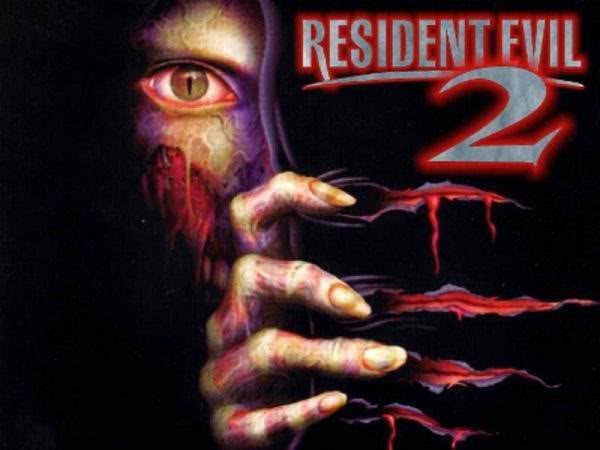
The ruined remains of Raccoon City are an iconic scene in gaming. Streets are shaped by the fiery debris of barricades while the bodies of the dead decorate the scenery. You take refuge in Kendo’s gun shop, but the owner is ambushed by zombies. One hope is the Raccoon Police Department, but no longer do the officers inside abide to protect and serve. Nowhere is safe
Resident Evil 2’s legacy lives on, since its release in 1998 it has sold almost 5 millions of copies sold, with several ports ranging from the Dreamcast to Game.com. Thirteen years later and gamers still want to return to Raccoon City, with Resident Evil 2 appearing in arbitrary lists of games that need to be remade. Yet, despite the fans desire to go back, the series has moved forward in a different way.
The evolution of Resident Evil is comparable to the creative differences between George Romero and John Russo over zombies. After the success of Night of the Living Dead, the two creators chose different paths that they envisioned for the zombie genre. For Romero, zombies were a tool for social metaphors, and for Russo, zombies were a tool for satire. Similarly, since its release Resident Evil has changed reflecting two mindsets on game design, or as the ‘old’ and ‘new’; where one favours survival horror, the other favours action.

When it comes to the old, Resident Evil 2 captures the essence of what the series used to be about. You would be introduced to a harrowing environment, with the threat of death pushing you to adventure into the unknown. The pacing of the game wasn’t rushing you, instead it opted for a layered approach; the game would be cautiously slow while you searched around you, but as soon as you heard that footstep the situation would fasten, is it fight or flight? You would be punished for being reckless, especially with new addition to the health system that would slow down your movement speed and posture the closer you were to dying. A mistake would result in you slowly staggering away with an empty pistol from the dangers you had escaped, only hoping that something worse wasn’t around the corner. It was survival horror.
The remarkable thing is that the tone of the story and environments match. Noboru Sugimura was given control over the game’s scenario, and worked with the developers to make sure the game was consistent with the story. The results speak for themselves with the story, environment and music being consistent in atmosphere and theme. The police department opens as a stylized and extravagant building, with the piano subtleties playing in the music implying a unsettling predicament of what has yet to come.
Resident Evil 2 also had the only appearance of the ‘zapping system’, a system in which you could replay the story from a different characters perspective. This allowed for four possible scenarios, in which events and certain item pick-ups from the first play-through would affect the second, and events and character motives would be given an alternative look. Story events played out differently too, with Ada ‘dying’ in scenario A because of her betraying Leon, while in scenario B she sacrifices herself to allow Leon to live. It made the game more replayable because you would want to see how events would play out.

For a series known for cheesiness, bad voice-acting and Jill sandwiches, Resident Evil 2 is the only real success at a dramatic story. It’s simple and ambiguous, and by concentrating on a single line of events it highlights your struggle to escape while letting your do the rest. All it was about was your escape from Raccoon City, and your journey on the way. There was no clue as to what happened to the citizens of Raccoon City, and even the Umbrella Corporation was still a vague entity. It was about confronting your fears and going down that rabbit hole, watching things go from bad to worse as the monsters grew fiendish and the surroundings turned sinister. There was a lot to play for, but all that mattered was your survival.
Characters had to be believable in their setting, and they were. Leon as a rookie cop is relatable to the player because of his hesitance and inexperience. His progression throughout the game shows him to lack authority, getting shot, and throwing the G-Virus away in an emotional rage over his failure to protect Ada. Like us, Leon is human, and it makes him a believable character than the Master Chiefs and Shepards whose derivativeness has them being overly confident, skilled and hailed as icons who never experience doubt or failure.

Resident Evil 2 ends with your escape. You manage to live, but it’s a hollow ending with the fall of Raccoon City. With Umbrella at large and Chris still missing, the questions left open form the framework for the series. Code Veronica answers Claire’s search for Chris, but in the process it reveals too much about Umbrella making it bloated comical mess. Resident Evil 4 sweeps the story mess-up of Umbrella under the carpet, but the series becomes action orientated.
The state of the horror genre is shocking. Once it was strong with franchises such as Silent Hill, Alone in the Dark as well as Resident Evil. Yet gaming has changed, and instead of making the player feel vulnerable, now they have to feel empowered; you can’t be scared if there’s nothing to fear.
Survival horror is no more, yet for many; Resident Evil 2’s undead still live on.
——————————————————————————————–
Hello! It's been a busy few months but I'm finally posting content again (yay?). Since June I have started my own website, Hold Select, because I figured there isn't enough videogame websites. I'm Looking forward to getting back into the Bitmob community!


